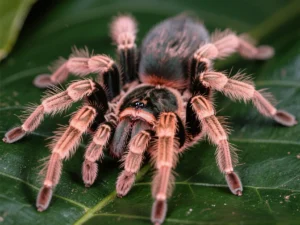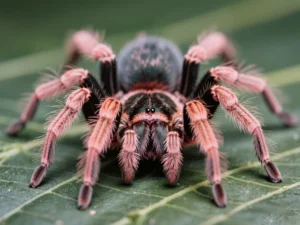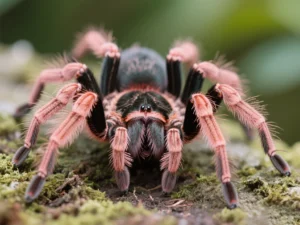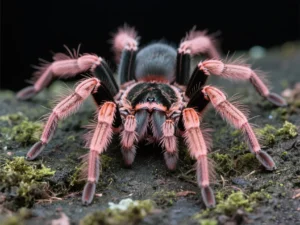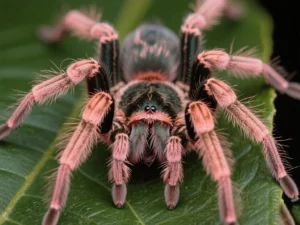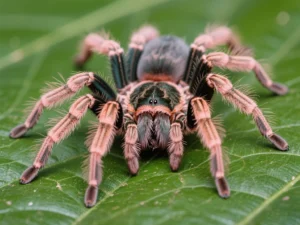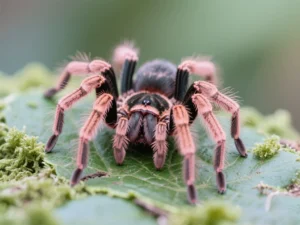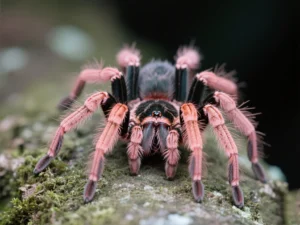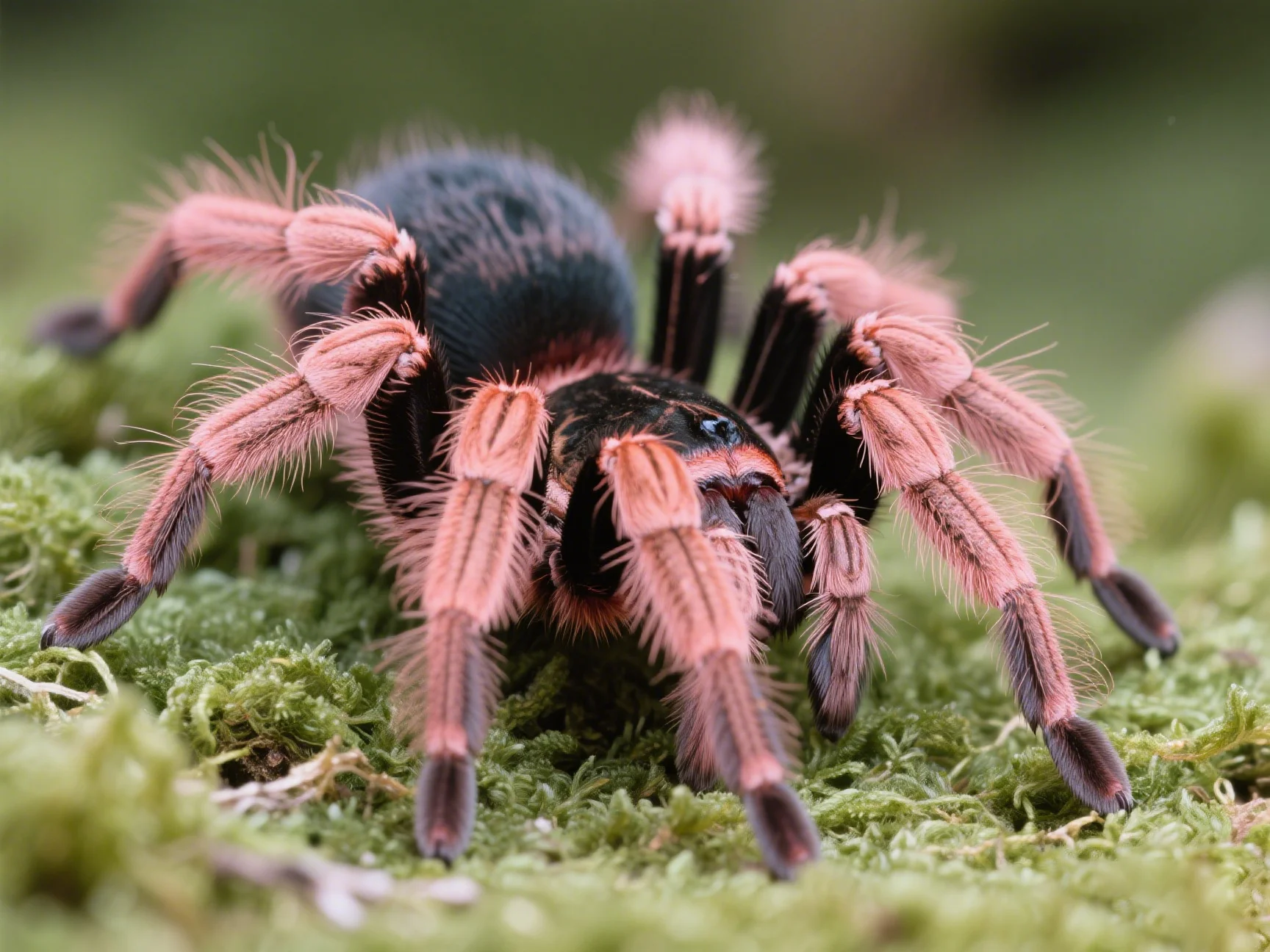
Tarantula Ecology
What do Antilles pinktoe tarantulas eat in the wild?
Understanding the natural diet of the Antilles pinktoe tarantula (Caribena versicolor) helps inform how we care for them in captivity. As arboreal predators native to the tropical forests of islands like Martinique, their diet consists primarily of the creatures they encounter in their tree-dwelling habitat.
Primary Diet: Insects
The vast majority of the wild diet of *Caribena versicolor* is composed of **various insects**. They are opportunistic hunters, preying on whatever suitable-sized arthropods cross their path or disturb their web retreats.
Common prey items likely include:
- Flying insects (moths, flies, beetles that land near their webs)
- Crawling insects found on trees (crickets, grasshoppers, roaches, caterpillars)
- Other arboreal arthropods
Their venom is adapted primarily for quickly subduing these types of invertebrate prey.
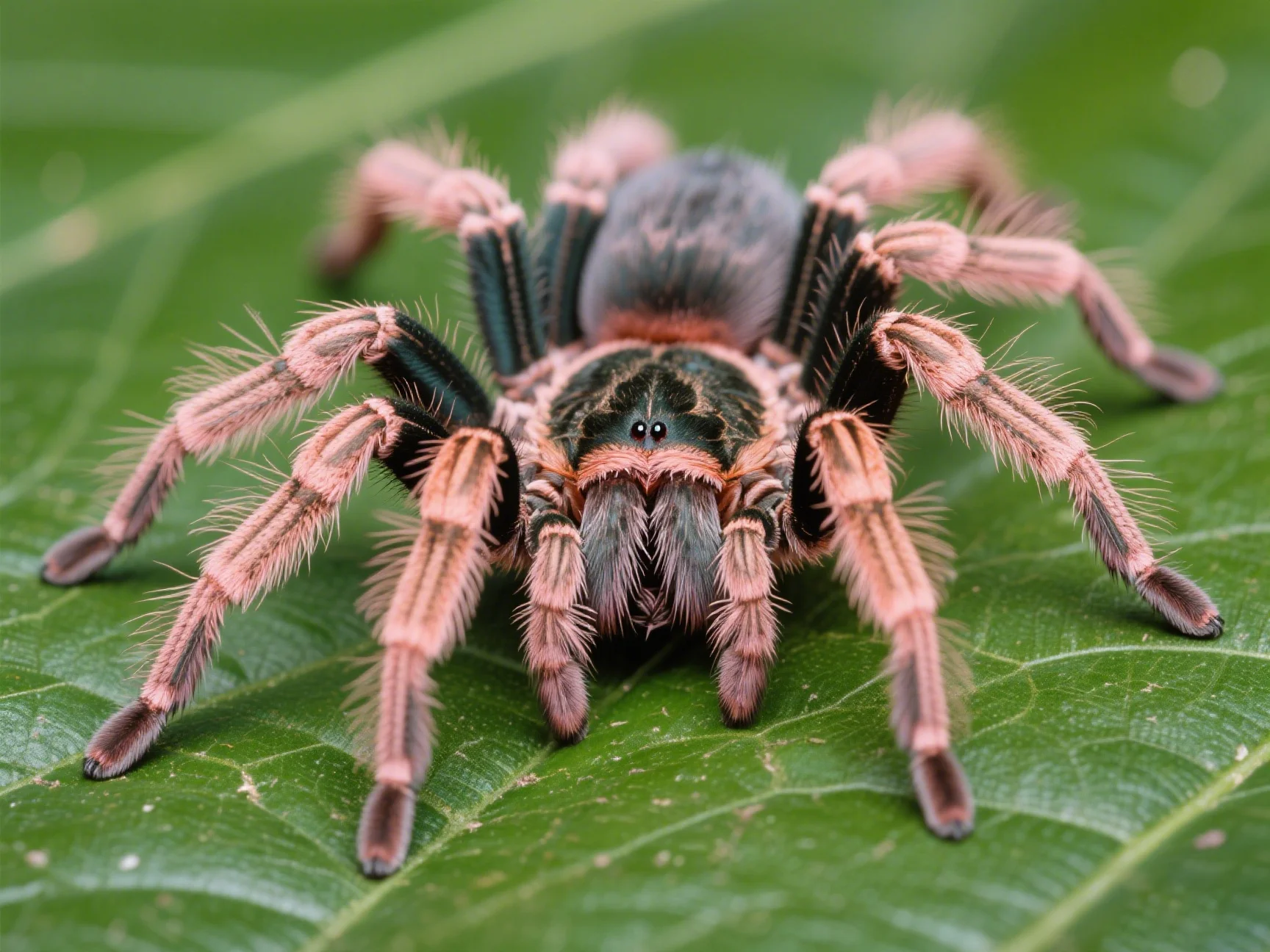
Arboreal Hunting Behavior
Antilles pinktoes typically build silken tube webs in tree bark crevices, among leaves, or in bromeliads. They often sit at the entrance of their retreat, waiting to ambush passing prey. Their speed allows them to quickly dart out and capture insects that venture too close. They use vibrations sensed through their silk lines to detect potential meals.
Occasional Small Vertebrates?
While primarily insectivores, larger adult tarantulas, including *Caribena versicolor*, may opportunistically prey on very small vertebrates if the chance arises. This could potentially include:
- Tiny tree frogs
- Small lizards (like anoles)
- Possibly hatchling birds or small mammals encountered in trees (though likely very rare)
However, insects form the core and most significant part of the [natural diet of Caribena versicolor](https://www.lopehare.com/tarantula-pet-care/). Vertebrates are likely supplementary and infrequent additions rather than a staple.
Captive Diet Note: While they might eat tiny vertebrates in the wild, feeding vertebrates like pinky mice in captivity is generally discouraged for *Caribena versicolor*. It can lead to health issues due to high calcium/fat content and potential impaction. A varied insect diet is much safer and more appropriate.
Mimicking the Wild Diet in Captivity
The best way to replicate their natural diet in captivity is to offer a variety of gut-loaded insects. Providing different types of feeders (crickets, roaches, locusts) helps ensure a broader range of nutrients, mimicking the diversity they would encounter in the wild. This approach supports overall health better than relying on a single prey type.
By understanding what Antilles pinktoe tarantulas eat naturally, we can provide them with the best possible nutrition in our care, contributing to their health and longevity.
Information synthesized from general knowledge of tarantula ecology and dietary habits described in resources like the “Biology of Spiders” by Rainer F. Foelix and observations from their native habitat documented by researchers (IUCN Red List assessments often include habitat/ecology notes).
